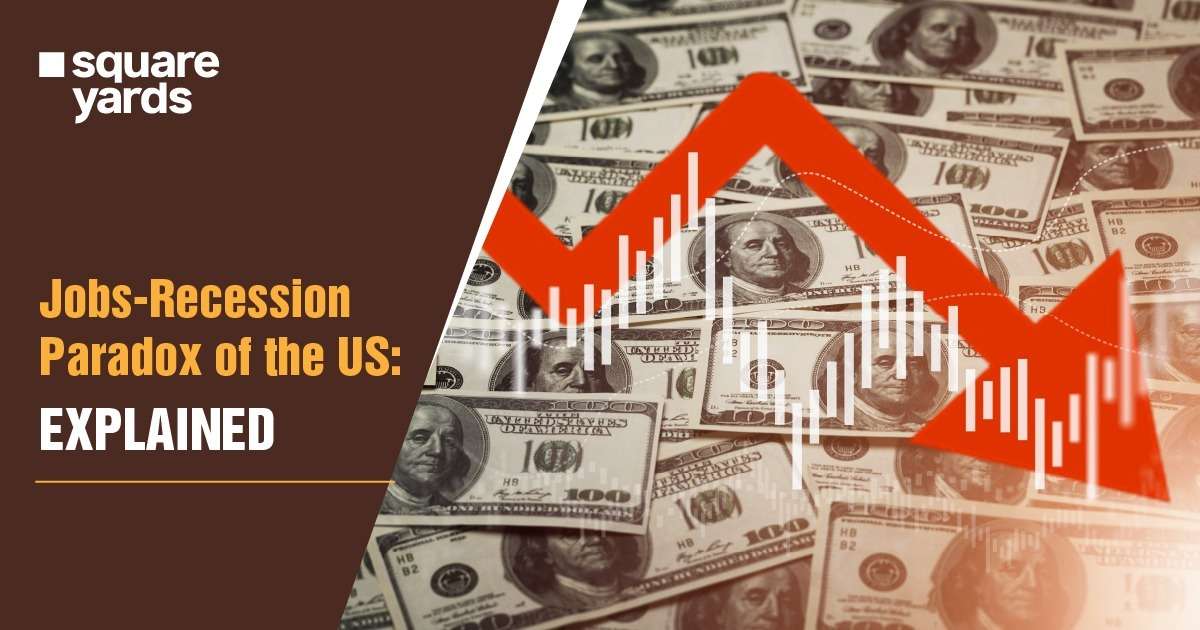The US GDP has experienced a consecutive decline in the last two quarters. This raises an alarm of a looming recession at bay. Historically, every recession in the US-history post world war-2 has been synonymous with unemployment. However, in this post-COVID era, a new phenomenon has been identified.
Despite the shrinking US GDP, the rate at which the United States has been creating jobs is impressive. As nearly half a million jobs are generated every month. The unemployment rate in the country has been the lowest since 1970 and has disputed the historic precedence of synchronised unemployment and declining US GDP.
Table of contents
Impending US-Jobs Recession
An increase in interest rates directed by the US Federal Reserve point toward an imminent episode of systematic imbalances that risk the financial system. And also indicates a diminishing pattern of demand and consumption. External factors such as volatility in oil prices, economic stagnation in China, and the looming threat of new strains of Coronavirus have added fuel to the fire.
This economic uncertainty seeps into the business world that instigates the lay-off process. This further diminishes the purchasing power of the consumers and further affects the business, which in turn stimulates ongoing unemployment. This vicious cycle of US-Jobs recession also shrinks the US GDP and affects the global economy.
Labour Market Contradiction
US Federal Reserve tightens its grasp on the interest rates to subdue the contraction of the economic output. It is yet to affect the labour market of the United States. The companies, especially the covid-hit service sector, are leaving no stone unturned in hiring talent from the market. This is indicated in the data provided by the US Bureau of Labour Statistics, which has identified an increase of 5,28,000 in non-farm payroll.
This phenomenon is solidified by the two monthly surveys released by The Labor Statistics News Release.
The Household Survey: Examines the status of the labour report, unemployment, and the demographic characteristics
Establishment Survey: Evaluates the employment in the non-farming sector and industry-specific earnings.
According to the reports published, it has been noted that there have been:
- Record Ratio openings are available to potential candidates.
- The working population number in America has surpassed the pre-pandemic era.
- The country’s unemployment rate has diminished to 3.5% in July, which is lower than that of February 2020.
see also – What Will Happen if the Rupee Hits 80 against the US Dollar?
Hike in Fed Rates
Many experts believe that the diminishing unemployment rate is providing room for the US Federal Reserve to tighten interest rates. The interest rate hikes directed by the US Federal Reserve can be utilised to subdue inflation. The Federal Reserve has adopted this strict monetary policy to administer the soaring inflation. It has been predicted that more such hikes are impending in the future with the recession levels to stay at base levels.
The Ambiguity of the Employment Trends
The positive employment trend might not encapsulate the full picture of the American Economy. The non-farm payrolls do not consider household employment, a much broader measure yet to exhibit any growth in the past fourth months. It has also been identified that the retail giants of America have substantial unsold inventory, which indicates a diminishing consumption pattern.
Other Indicators to Account
Other factors are signalling a substantial US GDP recovery contrary to the ongoing narrative.
- The US Stock markets have been showcasing a bullish trend since Mid-June.
- Many experts believe that compacting the monetary policy by the US Federal Reserve does not necessarily indicate an impending recession. Recessions have historically happened as a result of economic shocks.
- Except for the recession in 2020, induced due to pandemic, all the recessions before it have been driven by credit. It has been noted that excess cash is a more likely catalyst for recession instead of excess debt.
Worldwide Impact of US Federal Reserve Hikes
A hike in interest rates negatively impacts emerging markets across the world. When the US Federal Reserve increases its interest rate, it narrows the gap between the interest rates of the two countries. This diminishes the attractiveness of emerging markets like India to carry trade on currencies. A higher interest rate set by the US Federal Reserve indicates a weaker growth stimulus that could severely affect the global economy, especially when China is going through economic stagnation and a real estate crisis. Substantial returns for the US Bond markets can negatively impact the securities market and dissuade foreign investors.






















